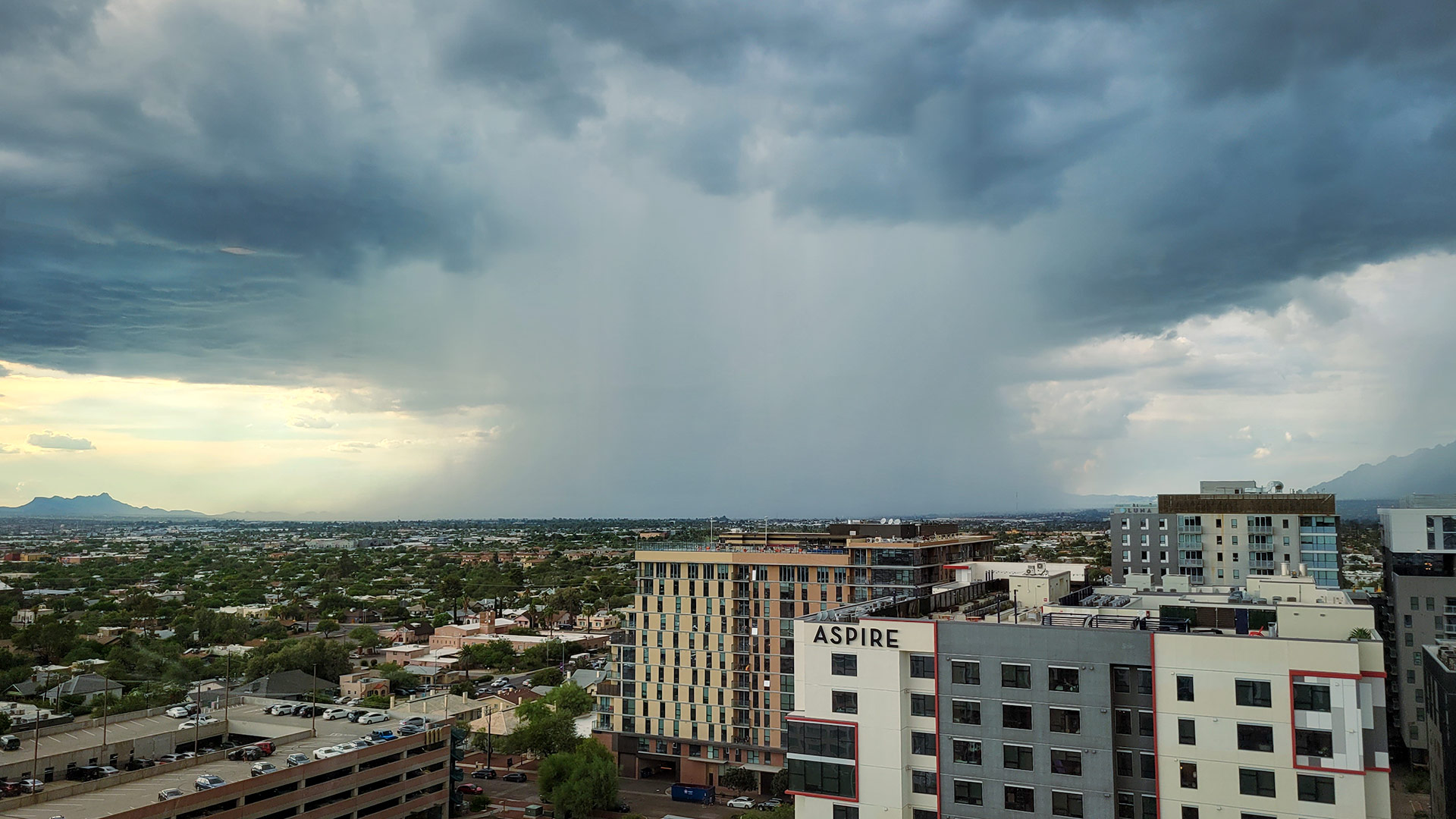 A monsoon storm drops localized, heavy rainfall over northwest Tucson, Marana, and Oro Valley. From August 2022.
A monsoon storm drops localized, heavy rainfall over northwest Tucson, Marana, and Oro Valley. From August 2022.
A University of Arizona-led community partnership called, Project Harvest, has collected and analyzed rainwater for the past six years.
Project Harvest was created by environmental science professor, Monica Ramírez-Andreotta and the Sonora Environmental Research Institute Inc. Project Harvest worked with different communities throughout Arizona to collect the data.
Project Harvest found lead, arsenic, pesticides, and E. coli bacteria in the collected rainwater. In addition, the data also showed contaminants increased during the monsoon season.
“Pollution interferes with these environmental public health interventions, so people want to know what the quality of the water is and how they can use it,” said Ramírez-Andreotta.
Researchers believe that dust-carrying contaminants could be the main cause of increased levels of pesticides and prometon, which are commonly found on paved roads.
While the levels of lead, arsenic, and E. coli are within the Environmental Protection Agency’s enforceable drinking water standards, no level of exposure is safe for human consumption.
In addition to the seasons, location had a factor in contaminant concentrations. Lead and arsenic were mainly found in government and industrial sites while low levels were found in rooftop-harvested rainwater.
“In most cases, it is not the individual behavior that’s leading to these concentrations in the rainwater…The burden is being placed on them,” said Ramírez-Andreotta.
If individuals are trying to conserve water, grow their own food, and reduce their carbon footprint, it is recommended to use filtering and cleaning equipment, Ramírez-Andreotta said.

By submitting your comments, you hereby give AZPM the right to post your comments and potentially use them in any other form of media operated by this institution.